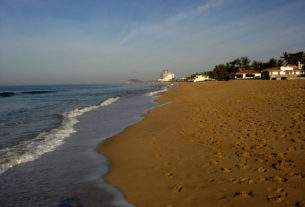The Declaration of Independence of the United States eloquently states in its introductory paragraph: “When in the course of human events it becomes necessary for one People to dissolve the political bands which have connected them with another…. a decent respect for the opinions of mankind requires that they should declare the causes which impel them to the separation”.
These words are also appropriately to describe the great event in Mexican history of Mexico’s Independence from Spain. This occurred not on “Cinco de Mayo” (May 5th, 1862), but on September 16th, 1810. Mexico celebrates the Fifth of May to commemorate the victory of the Mexican army over the occupying army of France at Puebla in May of 1862. The victorious Mexican general Ignacio Zaragoza, was born in Goliad, Texas, and his shared Texan Mexican heritage inspires celebration in both lands.
The celebration of Mexican independence, however, dates back even further, to 1810. Mexico was known officially as “La Nueva España,” (New Spain) the most important Spanish colony in the New World. Its supreme ruler was King Ferdinand VII of Spain, whose representative in Mexico was the “Virrey” (Viceroy). The military ambitions of Napoleon Bonaparte had severely disrupted the political situation in Europe and in the Spanish Empire. Napoleon’s revolutionary upheaval also posed a very real threat to the cherished treasures of the people of New Spain: a highly developed culture of almost three centuries and the Catholic religion.
The Napoleonic threat to Mexican culture united two mayor groups in New Spain: the “criollos”; the descendants of Spaniards born in Mexico, and the “mestizos”; the descendants of mixed marriages between Spaniards and native peoples. To protect these cherished values, “Los Insurgentes,” a movement to make Mexico a sovereign nation, arose in Queretaro. One of the leaders of the movement was Miguel Hidalgo y Costilla, the pastor of the nearby parish of Dolores. When he learned on September 15th, 1810, that the Queretaro conspiracy had been discovered by the Spanish authorities, he had no choice but to begin the rebellion.
The next day, September 16, the peasants from the surrounding area responded to the ringing of the church bell. They gathered in the courtyard of the church, were Father Hidalgo inspired them with a fiery cry: “Long live religion!, Long live Our Lady of Guadalupe! Long live the Americas and death to the corrupt government!”. This was the famous GRITO which triggered the long struggle for independence. The Cry of independence is repeated again and again, every year, in Mexico City from the balcony of the National Place in Mexico by the President of Mexico, and it is echoed by the governor of each state throughout the country.
The bell of the parish of Dolores was brought to Mexico City by order of President Porfirio Diaz and placed above the central balcony of the National Palace, establishing the tradition which has been solemnly followed every year thereafter. Every September 15th, al 11:00 p.m., the President, following the ritual, rings the historic bell and “gives the GRITO”. The Cry may include other acclamations, such as the one included by President Benito Juarez to honor all those who sacrificed to make Mexico free: “Long live the Heroes of our Independence!”.
The following article is reproduced with the kind permission of
the Consul General in Austin Texas.
It first appeared in their Gaceta Consular September 1996 – Austin, Texas – Year IV, Number 25

